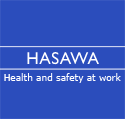Find out all the details about a health and safety consultant tasks. How much does a health and safety consultant charge? What are the qualifications to become a health and safety consultant? A health and safety consultant is a professional who advises businesses and organizations on how to ensure the health and safety of their employees, customers, and other stakeholders. They help identify and assess potential hazards, develop and implement health and safety policies and procedures, and provide training and support to employees to ensure that they understand and follow…
Read MoreCategory: Workplace
How to Report Accidents and Injuries at Work
Even after all the control measures in place still accidents may occur due to human error or the lacuna in the system. It is the employer’s responsibility to look after the safety of the workers and also it is his responsibility to develop a proper reporting system for reporting accidents at the workplace. Reporting an accident is a lawful necessity. The report will give a picture to the regulatory authorities about the injuries, deaths, illnesses and dangerous occurrences as how they are occurring and how they could be investigated. Why…
Read MoreRisk Assessment in a workplace
A risk assessment in a workplace is a sort of planning and strategy for the unseen future. It’s a must for a company that falls under hazards category to identify hazards in workplace. To answer the question of, how to do a proper risk assessment in a workplace? The process aims to think about the future by reflecting on the past. Risk assessment should involve a great degree of unpredictability. It focuses and prepares on resilience. Working towards a framework that helps in taking control of situations and prepares on how…
Read MoreIdentifying hazards in the workplace
Identifying hazards in the workplace is a part of risk assessment. It is a procedure that should be carried out regularly. In general, the workers should also report any issues that they feel might be a safety hazard. It is for their health and safety and also for their coworkers that they should act with responsibility and should report any existing or potential hazards. A hazard can be, a process, a system, a machinery, a chemical agent or any substance that might be a potential source for injury or harm to…
Read More
